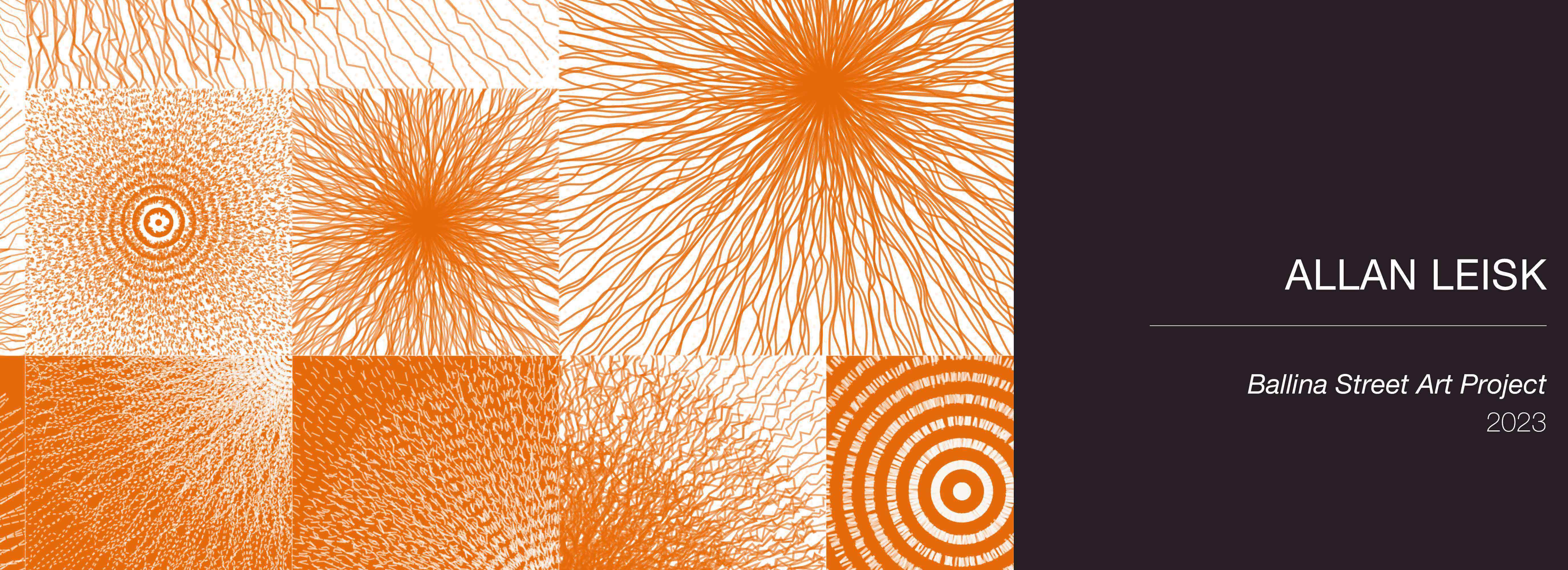
ARTWORK LOCATION: IGNITE STUDIOS, 60 Crane Street, Ballina
ARTIST BIOGRAPHY:
Allan Leisk is a Northern Rivers visual artist who works primarily with algorithms to create art. At the core of algorithmic art is creative coding, which, put simply, it is about writing programs to create art. Allan’s work is all hand coded without any involvement of AI in the creative coding practice. At the heart of his work is the concept of crafting organic forms through the medium of code. Allan’s enquiry into using code as an artistic medium involves solving problems like: How can you make something organic in a purely digital form? Can something look both organic and obviously digital at the same time? Can computer code be used to convey an emotion or spark a response? AutoEclectus is Allan’s pseudonym for his code-based generative art practice. His work has been published and sold as NFTs on fxhash, Teia, Objkt and Versum.
SELECTED ARTWORKS:
Kaibō, 2023 - The Kaibō algorithm dissects organic forms into composable elements then re-forms them into a precise geometric arrangement, which gives way to emergent patterns and organic growth the closer we look. Patterns in nature, from the spirals of seashells to the intricate branching of arteries, have long fascinated scientists and artists. Through equations and algorithms, mathematicians and artists can recreate and model the very patterns found in nature, offering insights into the processes that shape our world. From the Fibonacci sequence guiding the arrangement of sunflower seeds to fractal geometry explaining the coastline of continents, mathematics serves as a bridge between the abstract and the concrete, allowing us to appreciate the profound interconnectedness between the mathematical realm and the patterns that grace the natural world.
Folded Circle, 2023 - Inspired by hard-edge paintings from the 1960’s and circular shapes in nature, the Folded Circle algorithm uses randomness to generate a collection of colourful geometries. For each Folded Circle, the algorithm selects the colour palette, number of stripes, colour sequence and the number and position of folds from a range of values defined by the artist. Circles are ubiquitous in nature. They represent a fundamental harmony and efficiency that nature often strives for, as seen in the concentric growth rings of trees, the spherical shape of water droplets, the graceful curve of ripples on a pond, the shape of a full moon in the night sky and the orbits of planets around the sun. Circles connect both the abstract realm of mathematical geometry and the organic forms that make up the physical world.

